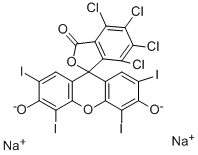Rose grows as a plant, shrub, bush or thicket. The flowers exhibit a five-petal calyx and a multiple five-petal corolla. Like the corolla, the seeds are inserted in the calyx. The plant is of Asiatic origin. Countries where rose is extensively cultivated for extractive purposes include Bulgaria, Turkey, Morocco, France and Italy. The parts used are the flowers, buds, leaves and fruit (hips). Rose has a deep, warm, rich rose odor with a slightly bitter, sharp flavor at high concentrations; pleasant on dilution. The fragrance of the rose flower, captured by extraction, is one of the most valuable flavor and fragrance products used. The most common aroma concentrates of rose are rose oil and rose water, derived from steam distillation; and rose concrete and rose absolute from solvent extraction. Of these, rose oil and rose concrete are produced in the largest quantities.
The choice of rose derivatives for flavor application is often determined by the feasibility of introducing water-soluble β-phenethyl
alcohol into the flavor complex. This component is present in large quantities in the extracts; it is almost absent in distillates and may,
therefore, have a significant effect on the resulting aroma
ChEBI: Rose bengal is an organic potassium salt that is the dipotassium salt of 2,3,4,5-tetrachloro-6-(2,4,5,7-tetraiodo-6-hydroxy-3-oxoxanthen-9-yl)benzoic acid. It has a role as a fluorochrome and a histological dye. It is a xanthene dye and an organic potassium salt. It contains a rose bengal(2-). It is functionally related to a fluorescin.
Essential oil composition
The main constituents of rose derivatives include linalool, β-phenethyl alcohol, l-citronellol, nerol, geraniol, eugenol, aldehydes, esters and stearopten (paraffins).
Retinoblastoma-associated protein (RB1) modulates the cell cycle. It acts as a repressor of transcription mediated by E2 factor (E2F) and influences transcriptional silencing. RB1 modulates mitochondrial activities and has a role in the organisation of heterochromatin. Mutations in the gene encoding this protein have been associated with childhood retinoblastoma.
This biological stain can be purified by chromatography on silica TLC using a 35:65 mix of EtOH/acetone as eluent. [Beilstein 19 II 261, 19 III/IV 2926.]



